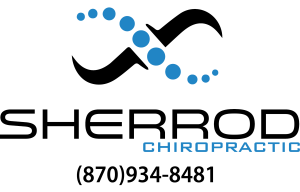Your First Visit
Get a head start on your first visit by filling out the New Patient forms at home. Click HERE to Print your forms
What to Expect on Your First Chiropractic Visit
You’ve decided to visit a chiropractor, but you’re not quite sure what to expect on your first visit. The following page will help you feel at ease during your first chiropractic appointment. During the first visit, the doctor of chiropractic—commonly referred to as a chiropractor—will complete a thorough examination that typically includes:
• Patient history
• Physical examination
• Diagnostic studies (when indicated)
• Diagnosis
• Chiropractic treatment plan
Patient History
Prior to your initial consultation, you will be asked to fill out forms that provide background information about your symptoms and condition. Questions may include:
• When did your pain/condition start?
• Where is the pain located?
• Did pain/condition immediately follow an injury or accident?
• If anything improves or worsens the pain?
• What treatments have you already tried, and how successful were they?
You may also be asked to provide family medical history, any pre-existing medical conditions or prior injuries, and previous and current health providers and treatments. To properly diagnose your problem and design a treatment program, your doctor of chiropractic needs to know about any of the following:
• Bone disorders such as osteoporosis
• Implants like pacemakers, artificial joints, cosmetic implants, etc.
• Circulatory problems
• Dizziness or blurred vision
• Heart conditions such as hypertension
• Nausea
• Injuries, such as bone fractures, muscle sprains/strains, or disc injuries
• Joint disorders such as arthritis
• Any current health condition for which you are receiving care from another health care practitioner
When applicable, bring with you any copies of previous tests (for example, MRI or X-ray reports), lab results, and a list of any medications you are taking, including over-the-counter medications, nutritional supplements,
vitamins, herbs, teas, and homeopathic and/or naturopathic substances.
Chiropractic Physical Examination
The next step is a physical examination your chiropractor will perform to evaluate your condition and develop a working diagnosis. In addition to general physical examination procedures such as blood pressure, pulse, respiration, and temperature, the examination will include specific orthopedic and neurological tests to assess:
• Range of motion of the affected area that is observed while you walk, turn, bend, or lift
• Muscle tone
• Muscle strength
• Neurological integrity
• Posture
Diagnostic Studies
Diagnostic studies help diagnose conditions more accurately. The most common used by chiropractors include:
• X-ray
• MRI (magnetic resonance imaging), CT, or bone scan
• Laboratory tests
Many chiropractic offices have their own X-ray equipment, but an MRI scan and more extensive tests may be referred to an outside center.
Diagnosis
The combination of the history, examination, and diagnostic studies will allow your chiropractor to reach a specific diagnosis, which will help the doctor of chiropractic determine whether your condition or pain may respond to chiropractic care.
The chiropractor will explain:
• The diagnosed condition
• The chiropractic treatment plan (or other recommended treatments)
• The anticipated length of care
If your chiropractor determines that your condition would be more appropriately treated by another health care professional, he or she will make the proper referral. Your treatment plan may also involve collaborative care with other health care providers, such as your primary care physician, a physical therapist, or a neurologist. In many cases, such as those involving lower back pain, chiropractic care may be the primary treatment method. When other medical conditions exist, chiropractic care may complement or support medical treatment by relieving the musculoskeletal problems associated with the condition.
Treatment
If you and your doctor of chiropractic agree that chiropractic will help, you will receive your first chiropractic adjustment. While patients are typically asked to lie on a specially designed table, the chiropractor most often uses his or her hands to manipulate the joints of the body, particularly the spine, to reduce pain and restore or enhance joint function. Your doctor of chiropractic will adapt the treatment plan to meet your specific needs. Other treatments, including therapeutic ultrasound, electrical muscle stimulation, ice and heat, traction, soft-tissue massage, and rehabilitative exercises, may also be used.
The extent and duration of the patient’s problems coupled with the hands-on nature of the chiropractic treatment may require numerous visits. Your doctor of chiropractic should tell you how long you can expect the treatment to last.
You may also receive instructions on certain activities or procedures to conduct at home. This may include ice or heat application, avoidance of certain activities or positions, as well as home exercises and/or stretches. There are thousands of good chiropractors available that use sound, well-documented procedures. Choose a chiropractor you are comfortable with, who addresses your health concerns, and who uses sound principles of modern health.



